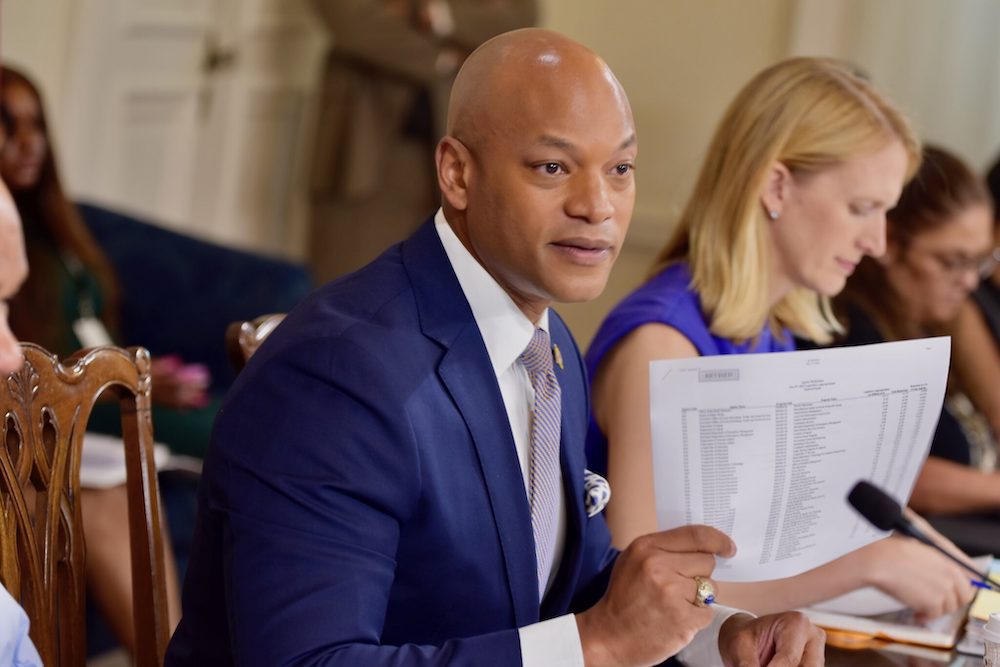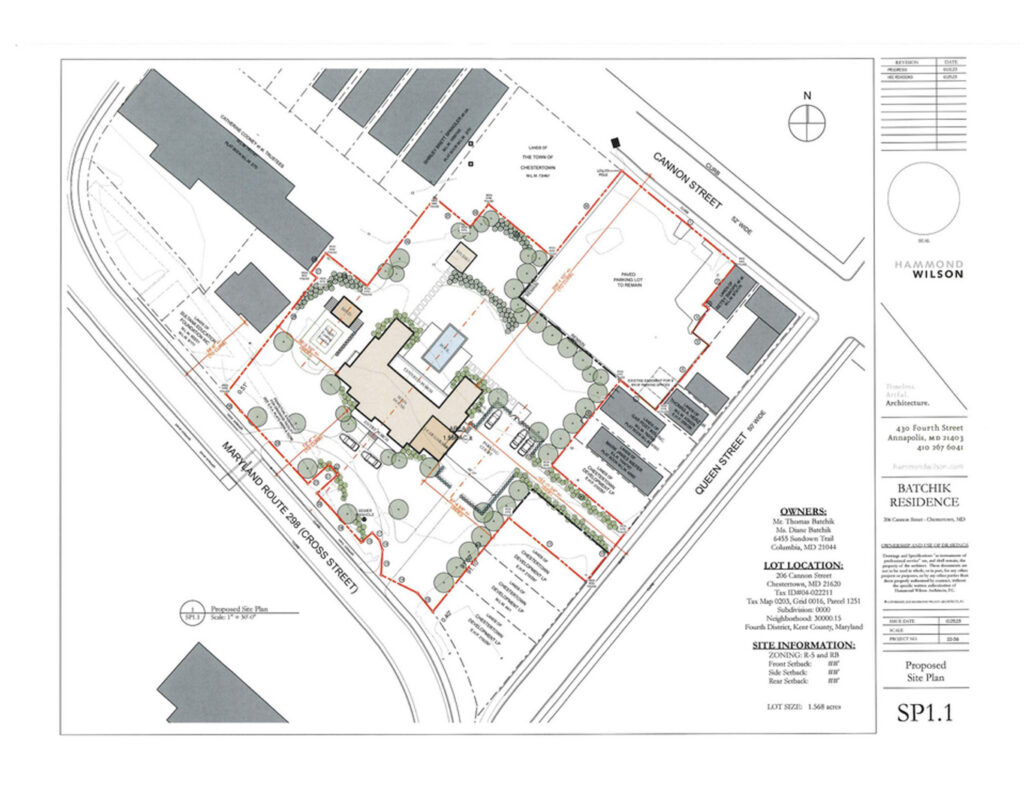Maryland faces nearly $1 billion in projected budget deficits driven by as much as $800 million in projected Medicaid shortfalls over two years.
On Wednesday, the Board of Public Works, chaired by Gov. Wes Moore (D), approved nearly $150 million in budget reductions. The cuts will be coupled with other actions in an attempt to ease the pressure on the state’s budget.
“It’s a reasonable estimate at this point in time,” said Senate Budget and Taxation Chair Guy Guzzone (D-Howard), when asked about the two-year Medicaid deficit projection.
“And that’s Medicaid. There’s some other component parts that may add a little more to it,” Guzzone said. “The problem is that we get locked into numbers, but when you do this long enough, you know better than to get locked into numbers. but you have sort of in your mind what you’re dealing with, and it’s essentially, probably just under $1 billion overall, with everything that could possibly be.”
The administration has hesitated on publicly using a dollar amount to define the projected Medicaid and child care subsidy deficit.
Multiple legislative sources placed the projected deficit for Medicare alone at roughly $800 million over the previous and current fiscal year.
In a July 12 letter to the Legislative Policy Committee, which is chaired by Senate President Bill Ferguson (D-Baltimore City) and House Speaker Adrienne Jones (D-Baltimore County), Department of Legislative Services analysts said the “fiscal 2024 deficit has grown to approximately $580 million in general funds across Medicaid and MCHP (the Maryland Children’s Health Program), including fiscal 2023 bills paid in fiscal 2024.”
Analysts note that the Moore administration plans cover $350 million in Medicaid services costs from fiscal 2024 in the fiscal 2025 budget.
“This strategy of pushing costs into fiscal 2025, coupled with the fiscal 2025 budget likely understating the cost of fiscal 2025 services, will result in a substantial shortfall that will need to be addressed during the 2025 legislative session,” the analysts wrote.
Added to that is a shortfall in the state’s child care subsidy that will push the total deficit to nearly $1 billion.
Asked about the legislative estimates, a Moore spokesperson said late Wednesday that the budget deficit is still a moving target.
“We’re waiting to see where FY24 Medicaid numbers land, as MDH (Maryland Department of Health) closes out its books, and we’re still working on an updated estimate of the FY25 Medicaid,” the spokesperson said in an email. “It’s hard to pin policy to a moving target. Seems like most everyone agrees on that point.”
The Board of Public Works on Wednesday moved to adjust early, approving the governor’s request for nearly $150 million in reductions to dozens of agencies and programs. The cuts to the fiscal year budget that began July 1 aim to protect spending on health and child care, which Moore has said is key to lifting the state out of an economic and fiscal malaise.
Moore said at the board meeting that the state has “over 1.7 million Marylanders enrolled in Medicaid” — more than one-fourth of the state’s population of nearly 6.2 million. Additionally, he said, the state has seen a 70% increase in children receiving state child care subsidies.
“The historic investments that we’ve made in health care and in child care are two of the largest drivers that have necessitated the actions that we’re asking the board to approve today,” Moore said. “In protecting these two areas, we also needed to make hard decisions about how we invest elsewhere.”
Maryland Budget Secretary Helene Grady told the board that the cuts from dozens of programs, which will be reallocated to Medicaid and child care, are “a proactive step.”
“At this point, we anticipate needing to add appropriation to our Medicaid and child care scholarship budgets in fiscal ’25, given our agency’s success with ensuring that eligible families are enrolled in each program, and given our expense trends through fiscal 24,” Grady said.
“Ensuring that eligible Marylanders can access health care and child care affordably are deliberate policy priorities of the governor and the legislature,” she said. “This proposal reinforces our prioritization of these efforts in the state’s budget plan.”
Moore and Grady described the cuts as “targeted.” Some actions included slowing hiring and rolling back spending increases to prior year levels, something Moore has called “rebasing.”
“Since new funding for new initiatives has not yet been deployed these actions to slow or defer can have the least impact on services people already rely on in some areas of significant increase in funding in recent years,” Grady told the board. “The package also represents rolling back some of the increase to more sustainable levels.”
Republican legislators said the actions, unanimously approved by the board, are neither cuts nor fiscally responsible.
Senate Minority Whip Justin Ready (R-Carroll and Frederick) said the board’s actions merely reallocate spending rather than reduce it. He described Moore’s budget cuts pronouncement as “going out and holding a parade because you moved spending from one bucket to another. It’s not cuts.”
But Comptroller Brooke Lierman (D), a board member, lauded the moves, saying revenues are stagnant but “needs are growing. And we cannot meet those needs if revenues don’t keep up.”
Moving people into the workforce will improve the state’s fiscal picture, she said.
“People can’t work if they are sick, and parents cannot work, or guardians or caregivers cannot work if they cannot afford child care for their children at home,” Lierman said. “So, these collective sacrifices that we are seeing today will allow the state to increase spending in our health care and child care programs.”
A new layer to fiscal woes
Maryland already faces a series of looming fiscal challenges.
Legislative budget analysts warn of growing structural deficits in the billions of dollars through fiscal 2028. Most of that is tied to more expensive parts of the state’s Blueprint for Maryland’s Future, the education reforms.
In January, those analysts projected “the largest structural gap we’ve forecasted since back in the Great Recession.” They projected a structural budget deficit of $1 billion in the coming fiscal year will grow to $1.3 billino by fiscal 2027, the last year of Moore’s current term. A year later, it more than doubles to $3 billion — about 12% of projected general fund revenues for that year.
Additionally, the state still faces a gap between expected transportation and transit projects and revenue available in the Transportation Trust Fund.
When House Democrats this year called for increased taxes, Moore and Senate Democrats resisted.
Meanwhile, Moore has set his sights on the lofty, and likely expensive, goal of ending childhood poverty. And he has vowed to build the Red Line light rail system, connecting western Baltimore County to eastern Baltimore City. The exact cost of that project is unknown, but experts predict it will exceed the $2.9 billion cost of the Red Line when it was canceled in 2015 by then Gov. Larry Hogan (R).
The first tranche
Moore has tools to fill some of the budget holes.
The legislature left the governor roughly $125 million in available fund balances in the current budget year. And when legislative budget analysts said in March that the administration underestimated Medicare enrollment, lawmakers authorized Moore to tap the state’s Rainy Day fund by as much as $190 million.
Of that, $90 million could apply to Medicaid in fiscal 2024. The remaining $100 million could be used to offset Medicaid deficits in fiscal 2025.
Combined with the more than $148 million in cuts approved Wednesday by the Board of Public Works, that would be more than $465 million in offsets.
“You can sort of say we’re halfway there, if you will,” Guzzone said.
There is some dispute over how much of the $190 million in surplus funds Moore will use.
Multiple legislative sources said using the full $190 million is all but inevitable. Republican lawmakers point to the July 12 Department of Legislative Services memo that they say show the administration intends to use it all.
But Grady, in an interview Wednesday afternoon, said analysts may have misunderstood a June 24 report from the administration in which it repeated authorizing language in the budget. Grady said that the administration has only decided to take the first $90 million.
“We don’t intend to decide on later in the year, for all the reasons we’ve talked about,” Grady said. “There’s so much more for us to know.”
In that report, Grady said she only addresses fiscal 2024 expenditure projections.
“In my mind, my read of the statute language is that we will need to provide a similar report on fiscal ’25 projections alongside our plans to draw a fiscal 2025 $100 million, and that would be later,” she said. “This is the first tranche.”
by Bryan P. Sears, Maryland Matters
July 18, 2024
Maryland Matters is part of States Newsroom, a nonprofit news network supported by grants and a coalition of donors as a 501c(3) public charity. Maryland Matters maintains editorial independence. Contact Editor Steve Crane for questions: [email protected]. Follow Maryland Matters on Facebook and X.







